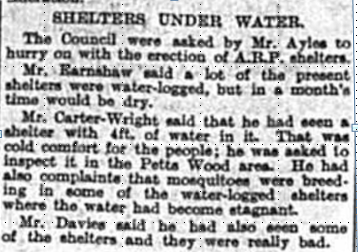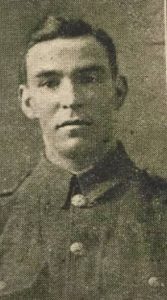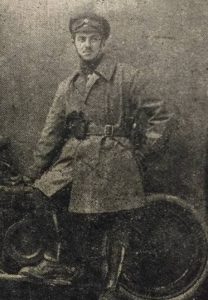 Protection of civilians in the event of an enemy attack was an important issue to the Government during World War Two. In 1938 the Anderson Shelter, named after Sir John Anderson, Home Secretary during the Battle of Britain was designed. It was designed for use in the garden, and when covered with earth the shelter would give some protection from shell fragments and bomber splinters, although dampness was an ever present problem.
Protection of civilians in the event of an enemy attack was an important issue to the Government during World War Two. In 1938 the Anderson Shelter, named after Sir John Anderson, Home Secretary during the Battle of Britain was designed. It was designed for use in the garden, and when covered with earth the shelter would give some protection from shell fragments and bomber splinters, although dampness was an ever present problem.
These shelters was designed to accommodate up to six people, and were supplied by the government for free to low income families. They were later sold to more wealthier people. In the month leading up to the outbreak of was, 1.5 million Anderson shelters were distributed. When production ended around 3.6 million had been produced.
Anderson shelters was intended purely as an emergency protection during air raids, but during the period of the Blitz, many were used every night!
As well as Anderson Shelters (and the Morrison Shelter, a cage-like construction that could be used as a refuge inside a house), a number of street communal shelter were constructed as it was recognised that there was a need to protect members of the public who might be on the streets or in public spaces. A big programme of erecting communal shelters began in March 1940.. However, in their hurried construction, there was problems with their quality control and some failed to provide the protection expected. Although improved designs were introduced, the rumours of their quality spread fast, and they remained very unpopular.
In 1941 Orpington Urban Council inspected a number of air raid shelters in the area which were in a bad state. Although it not stated, it is likely that this report, published in the local newspaper, is referring to communal shelters:
Shelters Under Water
The Council were asked by Mr Ayles to hurry on with the erection of A.R.P. Shelters.
My Earnshaw said a lot of the present shelters were water-logged, but in a month’s time would be dry.
Mr Carter-Wright said that he has seen a shelter with 4ft. of water in it. That was cold comfort for the people; he was asked to inspect it in the Petts Wood area, He had also complaints that mosquitoes were breeding in some of the water-logged shelters where the water had become stagnant.
Mr Davies said he had seen some of the shelters and they were really bad.
Sources:
Bromley & Kentish Times, March 1941
Air Raid Shelter Protection – RAF Museum





